By Joshua Farnsworth
In the above video you’ll see my fascinating trip to Colonial Williamsburg as part of a study of a relatively unknown type of molding plane, called “Mother Planes”.

On a grant from the Early American Industries Association, Bill Anderson, Larry Preuss, and myself studied Williamsburg’s collection of 400+ Mother Planes to see what we could learn about molding plane construction.
What is a Mother Plane?
In the 1800’s, larger molding plane manufactures used “mother planes” to cut a particular profile to larger quantities of molding planes. An attached fence is a main characteristic of a mother plane.

The folks at Colonial Williamsburg were kind enough to host us for several days in the top floor of the historic Capitol building.

Below you’ll see our research team (from left to right) Bill Anderson (the founder of the project), Larry Preuss (an expert plane maker from Michigan), Erik Goldstein (Curator of Mechanical Arts & Numismatics at Colonial Williamsburg Foundation), and Joshua Farnsworth (I took sevaral thousand photographs & scans of the mother planes):
Our study took place over several days in October 2014 and Feburary 2015. I’ll have to admit, prior to Bill’s invitation to join this study I hadn’t even heard of Mother Planes. But I quickly fell in love with the lovely mother planes, just as I had with molding planes in general.
Here are all my videos & articles from Colonial Williamsburg:
- Anthony Hay’s Cabinetmaking Shop Tour part 1
- Anthony Hay’s Cabinetmaking Shop Tour part 2
- Anthony Hay’s Cabinetmaking Shop Tour part 3
- Secret Mitered Dovetails with Kaare Loftheim at Colonial Williamsburg
- Treadle Lathe Wood Turning at Colonial Williamsburg Hay Cabinet Shop
- Resawing Wide Boards at Colonial Williamsburg Hay Cabinet Shop
- Dry Fitting a Walnut Chair with Brian Weldy at Colonial Williamsburg
- Stunning Colonial Williamsburg Mother Plane Collection
This is my “cave” where I spent several days photographing and scanning nearly 400 mother planes:
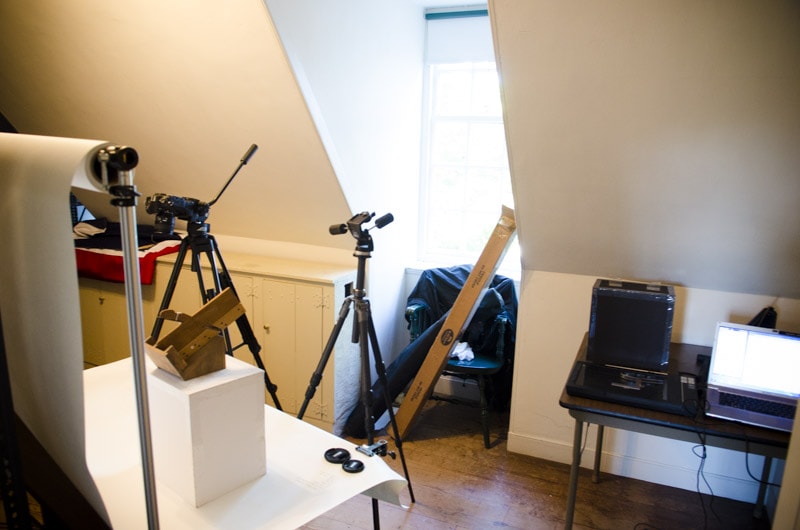
After removing the iron and wedge, we scanned the “toe” of each mother plane, then photographed each side. Here are some photographs of different views of some fascinating mother planes:
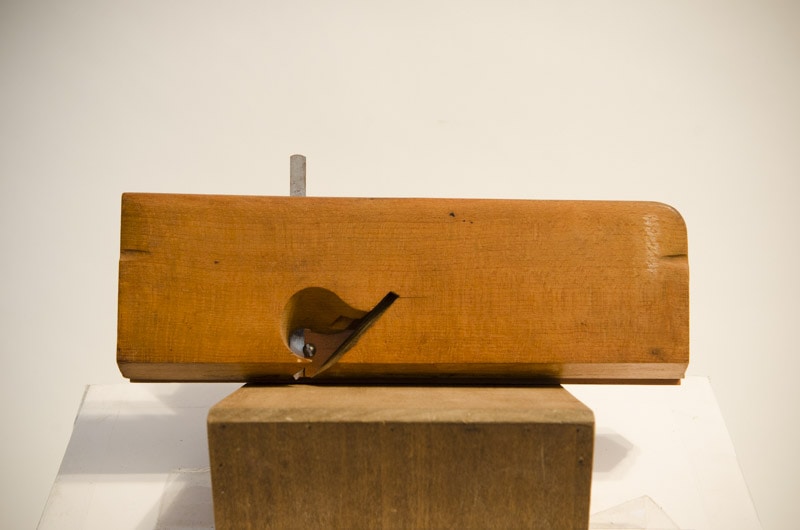
In addition to photographing and scanning each plane, Bill and Larry spent considerable time inspecting each mother plane for interesting characteristics such as cutting profile, dimension, size marks, and maker marks.

Details were meticulously recorded on detailed data sheets that Bill created, and each plane was assigned a number:
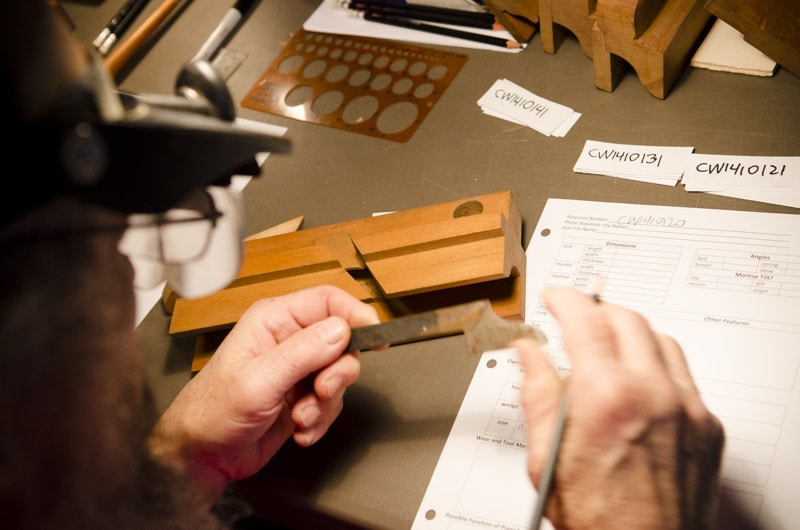


Erik Goldstein was kind enough to spend many hours with us to ensure that the valuable plane collection was handled properly:
Over the course of our stay, Erik gave us some amazing tours of rarely-visited parts of the capitol building, including incredible tool collections and a trek up the steep steps of the bell tower, which has only been visited by a handful of people since it’s dedication by President Franklin D. Roosevelt in the 1940’s.

Below you’ll see some fun photographs that I took of the Capital Building at Colonial Williamsburg (I highly recommend a visit to this 18th century wonderland):




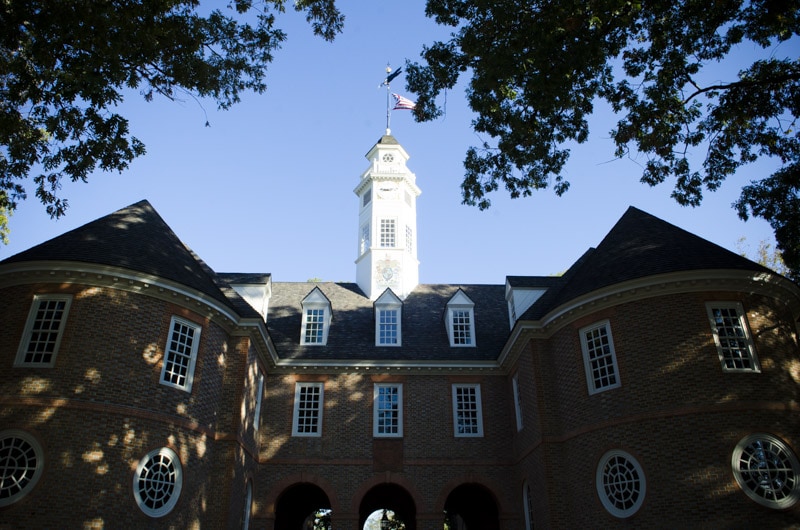
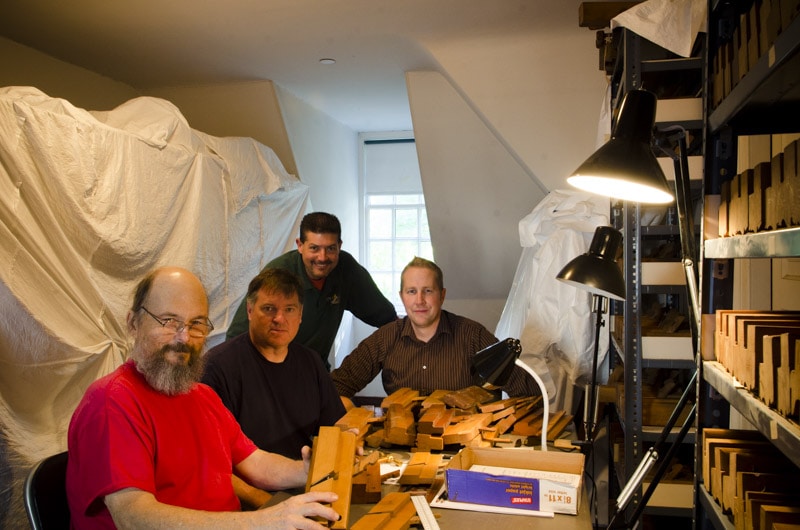




















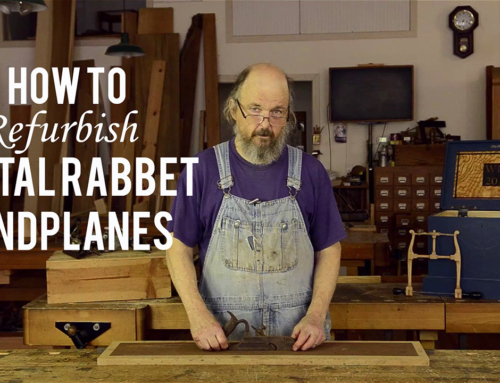


That video and pictures made my day. Thanks amigo.
Glad you liked it buddy, but you need a higher standard for what makes your day!
Enjoyed the video. Lucky that your there in that capacity. Question? Knowing that Williamsburg has done a lot of restoration work, how many Mother planes are originals and how many were reproduced for restoration work? I like that the radius of that beading plane was scratched on the side for later reference. Thanks.
Hi Jason, thanks for your comment…long time no hear! Colonial Williamsburg doesn’t actually use any mother planes, and I don’t know of anybody that has tried to reproduce them. They were made so that factories could do large quantities of molding planes, so smaller plane makers probably didn’t use them. The folks at Williamsburg used to use historic Williamsburg molding planes to build furniture, but I was told that back in the 1970’s they switched over to using only 18th… Read more »
I believe it does, thanks. Getting ready to watch your video on draw boring:)
Are the results of this study publicly available?
You know, not that I’m aware of. If you email me through the contact form, I’ll copy Bill on my response so he can let you know if anything was published.
Any update on the reports, published data, of the collection?
Love the Colonial Williamsburg series. Their early tool collection is not well known beyond hard core toolies
I am about to acquire about 80 pieces by a known Scottish/Canadian maker. I have 140 unique plane types by this family. I have seen another set of mother planes about twenty years ago at a Browns auction. I’m also aware of two other sets here in Canada attributed to two makers. I’m not so sure mother planes were limited to factory settings alone
Sounds exciting Doug! You’re right, a lot of plane makers weren’t in big factories, but in small shops.